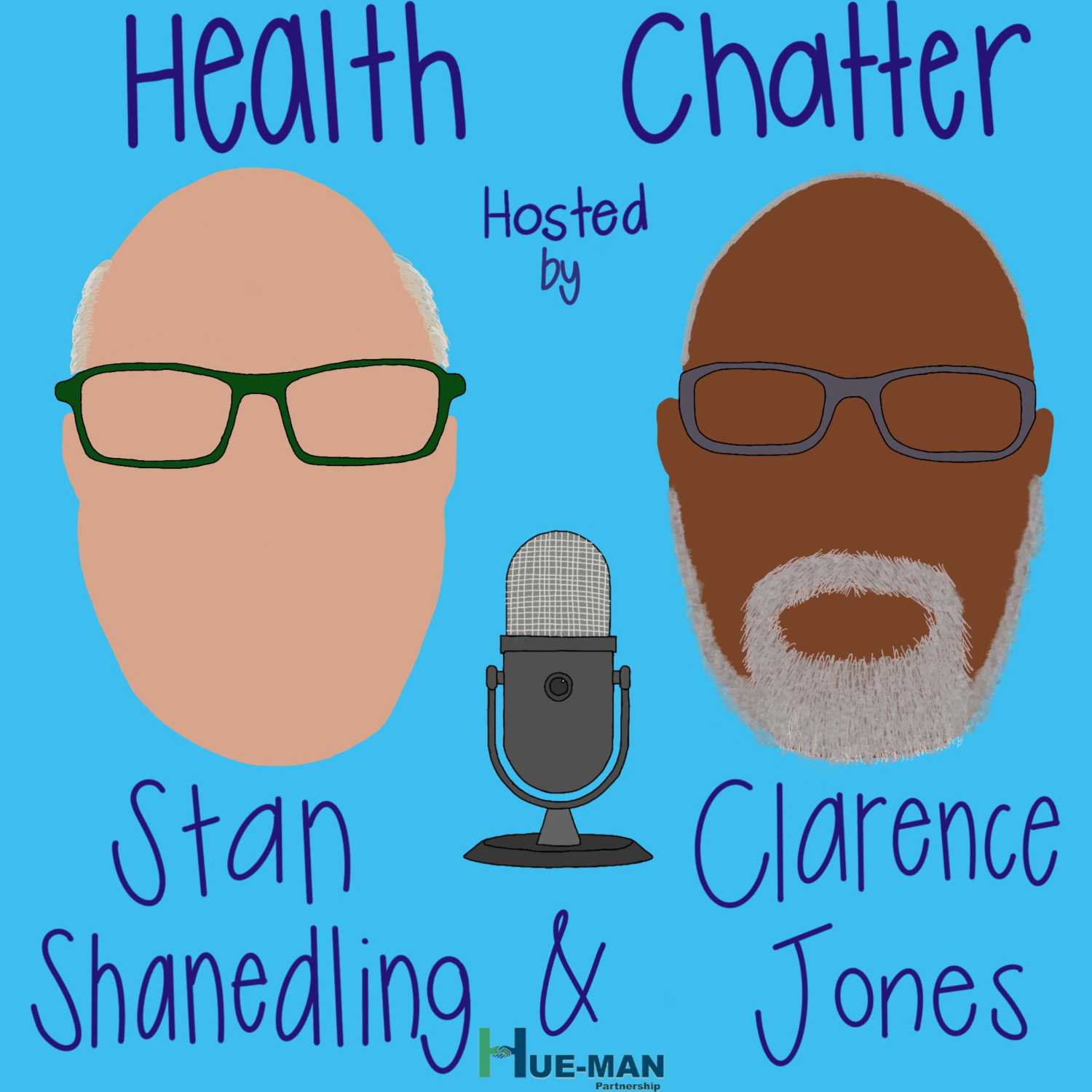Aug. 5, 2023
Pediatric ER Concerns
The player is loading ...

Stan and Clarence chat with Dr. Jeff Louie about pediatric ER concerns.
Dr. Louie is a pediatric emergency physician for M Health Fairview Masonic Children's Hospital. He also serves as Associate Professor for the Department of Pediatrics and Division Director of Pediatric Emergency Medicine at the University of Minnesota.
Listen along as we chat about the most common pediatric ER concerns, risk factors, seasonal variations, and more.
Join the conversation at healthchatterpodcast.com
Brought to you in support of Hue-MAN, who is Creating Healthy Communities through Innovative Partnerships. More about their work can be found at http://huemanpartnership.org/
Research
- The most common emergencies encountered in pediatric office practice are respiratory distress, dehydration, anaphylaxis, seizures and trauma. Assessment of children is sometimes difficult as the signs and symptoms might be subtle and not markedly expressed. NIH
- Hospital overwhelmed with kids in crisis being dropped at ER doors
- "They are not appropriate for admission. They have no medical concerns … but yet we can't safely discharge them because there is no place to discharge them to,"
- MN Doctors sound alarm over boarding of mental health patients in the ER emergency room
- Pediatric Surge Incident Plan from May 2019 at MDH
- The Minnesota Pediatric Surge Plan has been developed to ensure the state’s pediatric trauma centers are coordinated, have a common operating picture, and align with the ACS designated pediatric trauma centers located along the western border in North and South Dakota during potential statewide pediatric surge disasters.
- MDH Resource Page
- Hospital turns ambulance garage into a shelter for kids stuck in the ER for weeks
- Seasonal variations
- ER visits can coincide with start of school year i.e. academic stressors and schedule changes leads to more headache visits (2016 study)
- Warmer temperatures during summer → increased ER visits for kids <18 (especially infants and toddlers)
- Risk factors (i.e. are certain kids or population groups at higher risk for injury or medical intervention?)
- Social risk factors include food insecurity, lack of access to transportation, and language barriers
- Presence of risk factors can lead to kids not being admitted to the hospital or being released without a quality discharge plan
- Females are more likely to experience sexual abuse; males are more likely to experience physical abuse
- Studies show increased utilization of ER in Midwest compared to Northeast
- Due to physician shortage in rural areas?
- Effects of COVID-19
- Compared to 2019, overall pediatric ER visits decreased in 2020 and 2021
- Visits related to covid and other respiratory issues also declined
- Overall ER pediatric visits remained low during COVID-19 compared to pre-pandemic
- Result of caregiving/parental risk perception?
- Result of lockdown and/or fear of contagion?
- ER visits did increase for kids 0-4 at the end of 2021, aligning with the spread of the omicron variant
- ER visits related to certain injuries like self-harm, firearm, and substance poisoning increased (but varied by age group)
- Pandemic forced a reevaluation of the role emergency department physicians play in reporting suspected child abuse
- Prior to 2020, a lot of reports suspecting child abuse came from teachers and other school staff
- Did COVID-19 lead to true reduction in child abuse-related ER visits or did it lead to decreased recognition of child abuse?
- Screening for potential abuse
- Screening tools help physicians recognize abuse
- Can lead to diagnostic improvements related to child abuse
- Challenge → definitions of child abuse vary among different cultures, countries, etc. (i.e. definitions carelessness and neglect can be inconsistent)
- Drug use increase/decrease
- For kids 0-4: number of cannabis-related visits increased in 2020
- For kids 5-11: number of cannabis-related visits increased in 2020 and 2021
- For kids 12-17: number of visits related to drug poisoning (not cannabis specifically) increased
- Firearm injuries
- For kids 0-4: number of visits related to firearm injuries increased in 2020
- For kids 5-11: number of visits related to firearm injuries increased in 2020
- For kids 12-17: number of visits related to firearm injuries increased by 22 visits in 2020 and 20 visits in 2021
- Lack of medical insurance
- Children’s Health Insurance Program (CHIP; became law in 1997)
- Provides low-cost health coverage to children in families that earn too much money to qualify for Medicaid
- CHIP coverage and cost can vary by state
Sources
- https://pubmed.ncbi.nlm.nih.gov/27393745/
- https://www.cdc.gov/mmwr/volumes/71/wr/mm7108e1.htm
- https://iopscience.iop.org/article/10.1088/2752-5309/ac78fa
- https://ijponline.biomedcentral.com/articles/10.1186/s13052-021-01168-4
- https://www.jpeds.com/article/S0022-3476(22)00537-6/fulltext
- https://panoramaoem.com/index.php/poem/article/view/4
- https://www.ncbi.nlm.nih.gov/pmc/articles/PMC8856727/
- https://www.emra.org/emresident/article/covid-child-abuse-screening
- https://publications.aap.org/pediatrics/article/150/1/e2022056284/188279/Emergency-Department-Child-Abuse-Evaluations?autologincheck=redirected
- https://www.ncbi.nlm.nih.gov/pmc/articles/PMC7383610/
- https://www.healthcare.gov/medicaid-chip/childrens-health-insurance-program/



